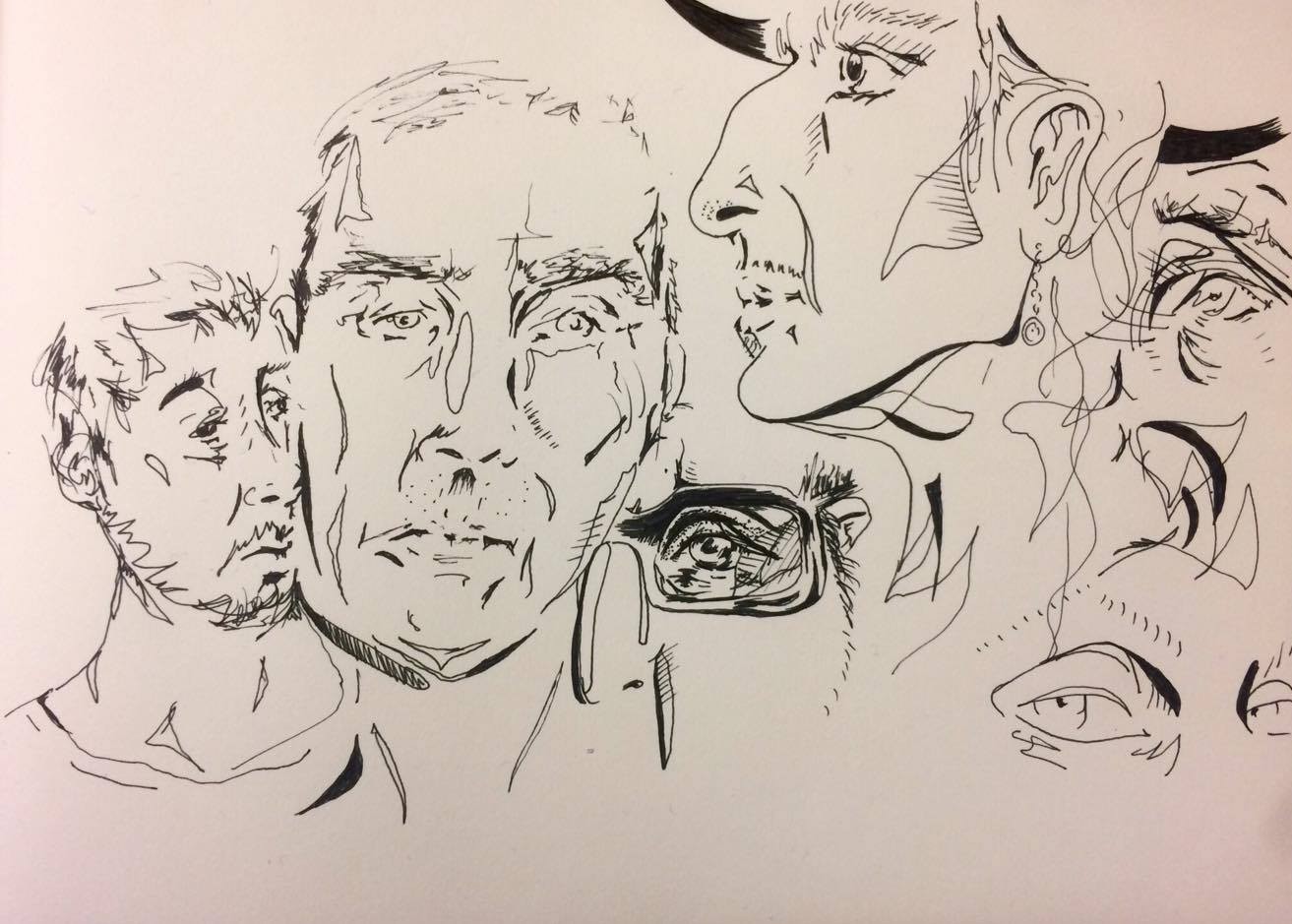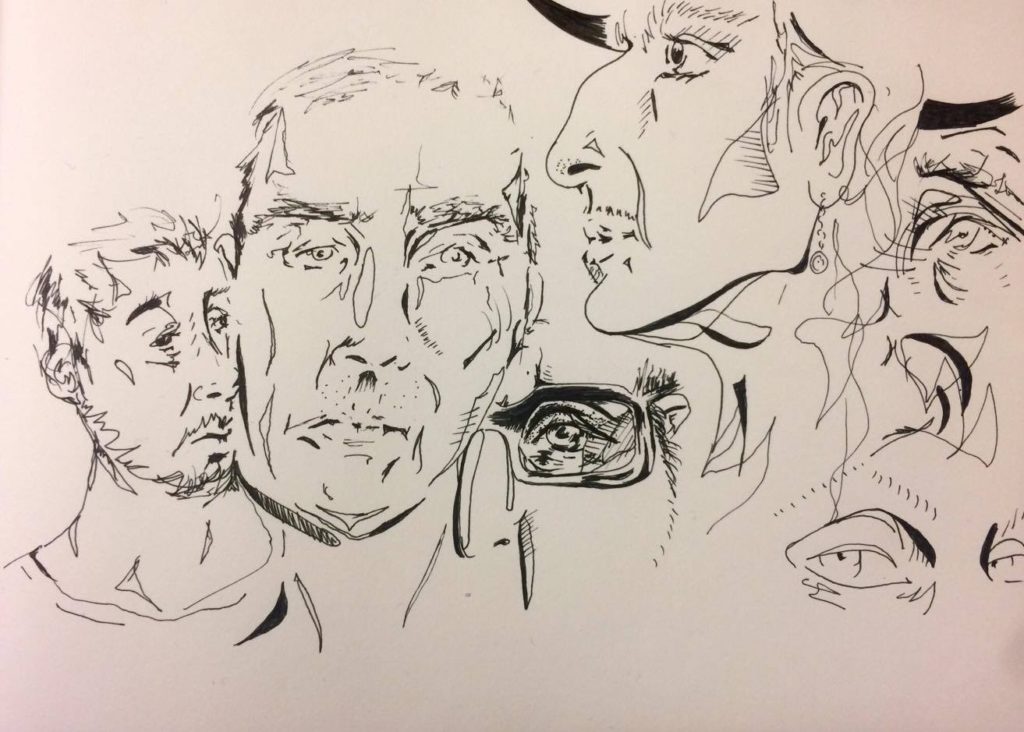In our epoch of eclecticism, how do creative directors in fashion balance between the old and the new? Erika Koljonen investigates.
The fast-paced realm of fashion, like the rest of the world, has recently witnessed a period of notable turbulence. Fashion houses now change their creative directors more frequently than I have minor breakdowns over my impending graduation with an English Literature degree. Interestingly, it is the French houses that have seen the most upheaval – the French being rather notorious in their habit of being sticklers to traditional design and keeping to the roots of the houses. Raf Simons’ departure from Dior after a short period of at its head shocked many, as did Alber Elbaz’s from Lanvin. And it’s not just the French: Balenciaga, Calvin Klein, Donna Karan … the list goes on.
To me, though, the most interesting changes are those currently brewing in Dior and Saint Laurent. Dior recently appointed their first ever female creative director, and Saint Laurent – following Hedi Slimane’s departure and the subsequent lawsuit against the house – is now headed by Anthony Vaccarello, the former creative director of Versus Versace. What is interesting in both of these houses, two brands that have reigned supreme in the fashion world for decades, is the mark that each of their creative directors has left. How have they continued to represent the brand’s core founding traits, whilst also adding their own creative ‘spin’?
Christian Dior revolutionised the way women dressed post-WWII with his ‘New Look’. Cinched waists, wide skirts, and exceptional tailoring created the “ideal” hourglass figure that today’s silhouettes still allude to. Dior’s ‘look’ has seen numerous reinventions during the past decade or so, most notably under the leadership of John Galliano and Raf Simons. These two are polar opposites in terms of design: Galliano’s opulent showmanship stands in stark opposition to Simons’ classic minimalism. Yet, the two enjoyed great success (prior to Galliano’s dramatic sacking, that is) as the brains behind the same house. The house archives’ influence was clear in John Galliano’s own interpretation of the Dior aesthetic; although much louder and infinitely brasher than anything Dior himself would have designed. And who can forget the controversial men’s AW00 ‘Homeless’ collection, parodied in Zoolander? Needless to say, I don’t think Christian Dior would have approved.
Galliano’s intricate gowns with their Marie Antoinette-esque twists were elegant showstoppers, often veering on the theatrical. But Bernard Arnault, the CEO of LVMH and chairman of Dior, saw Galliano’s feminine yet modern aesthetic striking in its resemblance to the house’s founder – in spirit, at least. He was, however, slow to adopt Dior’s influence: it wasn’t until the mid-noughties, almost a decade into his time at the house, that the vision of Christian Dior began to manifest itself in Galliano’s designs. Simons also utilised Dior’s classic silhouettes in many of his designs, but favoured Dior’s clean colour palette over Galliano’s showmanship. The feminine minimalism he brought to the house was a refreshing change, bringing Dior back to its roots.
Today, Dior is headed by Maria Grazia Chiuri, the first female creative director of the house that revolutionised the way women dress. Her SS17 collection was an homage to Dior: designs alluded to the Venus and Junon dresses of the 1950s, and the honeybee emblems were a direct nod to Hedi Slimane’s menswear designs. With her reworking of the Galliano saddlebag, as well as the subtle J’adior that decorated bra straps and waistbands, she provided an excellent lesson on how to utilise a brand’s core elements to contemporise and ‘refresh’ them for today’s world. Chiuri is also notable in her awareness of the weight of her role as first female head designer: t-shirts were printed with ‘Dio(r)evolution’ and ‘We should all be feminists’, ushering in a new era for the male-dominated house.
Yves Saint Laurent himself served as creative director of Dior from 1957-1960. His designs were a shot too radical for the house at the time: he was criticised for their Beat and bohemian influences. Appointed by Dior himself, this goes to show how the house’s creative directors are chosen for their own unique flair, often appearing to go against the essence of the house itself. Under Tom Ford, for example, the overtly sexy, provocative designs seemed to be at odds with the more classic ‘Parisienne’ style that had dominated the house. Laurent was reportedly so disappointed with Ford’s vision that he wrote him a letter stating ‘in thirteen minutes you’ve destroyed 40 years of my work’. Clearly, Ford’s time at Yves Saint Laurent – although a massive commercial success – was at odds with Laurent’s personal ethos.
But Laurent’s objections seemed somewhat hypocritical. His SS71 couture collection was lambasted by the public and the press for its references towards the dress of Nazi-occupied France, and for its overtly sexual designs: the models, more voluptuous than the fashion world was accustomed to, were sent out sans underwear in sheer blouses. Granted, Tom Ford’s own YSL collections were much more risqué, but the reactions towards them were the same.
In more recent years, Hedi Slimane has been appointed creative director. He seemed a perplexing choice: within a season, he’d abandoned the Rive Gauche glamour associated with the house in favour of ‘cool kid’ grunge, marking a departure from the brand’s original image. But this departure created designs more fresh-feeling, and saw a whole new generation of young devotees. And although the change in direction seemed radically different, the youth-orientated looks reflected elements of the Saint Laurent ethos. Marking a definitive move away from inaccessible fashion, the designer had launched the first ready-to-wear collection in 1966 as an answer to a growing youth culture. Slimane followed in this tradition: after all, it is not too difficult to rummage a charity shop for a flannel and mini-dress; but combat boots, ripped tights, and last night’s makeup? Less Yves, more ‘I’ve been out since Friday and am now scurrying home in the Sunday morning sun’. Slimane’s last collections saw the designer delving deeper into the Yves Saint Laurent archives for inspiration, abandoning his grunge-chic aesthetic for 80s looks with more resemblance to Saint Laurent’s original designs. Slightly shorter and tighter, of course.
New creative directors’ interpretations of classic houses like Dior or YSL are always interesting to see. Sometimes the ethos of the house pales in comparison to the vision of the designer, but the results are often new and exciting. Although the experimental periods at both houses were fantastic to watch, when you are designing for a house with such an established image, it is vital to stay true to the house itself. That’s not to say one must abandon personal style completely – that would make for dull shows – but there needs to be a clear balance. Past styles shouldn’t stay in the past, but we do need new visionaries to bring them into the present. And that’s the beauty of today’s world: we are living in the epoch of the eclectic. So let’s approach the new with the past in mind.
Article by: Erika Koljonen
Illustration by: Lara Delmage


